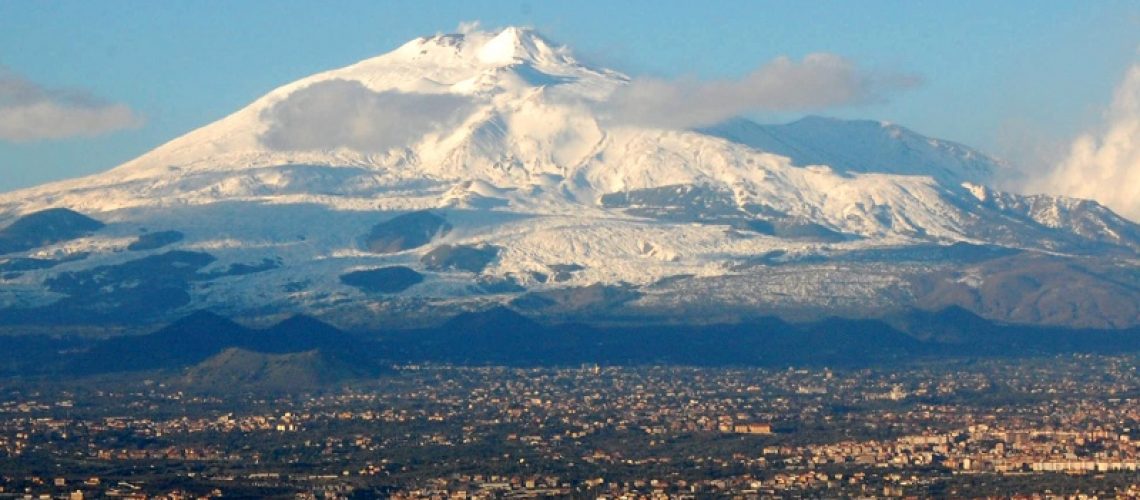Sicily has the largest concentration of active volcanoes of Europe after Iceland. In a definitely warmer environment and with better food… 😉
Sicily’s volcanoes: the “hottest” tour of Sicily!
A lunar landscape, black sand beaches, but also magma steaming in the snow and terroirs that, because of the natural fertilizing properties of the volcanic soil, offer great wine, fruit, vegetables. A reason more to come and visit Sicily!
Sicily’s volcanoes: Mount Etna, or of fire and ice
The biggest Sicily’s volcano is on the mainland. Mount Etna – simply “l’Etna” in Italian, “Mongibeddu” in Sicilian – is in the Province of Catania, north – east Sicily.
Etna is the tallest volcano in Europe: around 3300mt / 10000 ft. Being an active volcano its height can vary: it can become higher because of the magma solidification on the top, or lower when explosions reshape the top of the mountain.
Etna is high enough to have snow during the winter, so you have the chance to experience something quite unique: skiing, or just enjoying the snowy landscape, with the smoke, or even a stream of lava, in the background.
Sicily’s volcanoes: the archipelago
The others Sicily’s volcanoes are (volcani of course…) islands.
Stromboli is part of the Eolie islands and one of the most active volcanoes of the world, with quite a lot of explosive activity (named “stromboliana” after it). In the same archipelago, two more volcanoes: Vulcano (par excellence…) and Lipari.
On the opposite side of Sicily – off the south-west coast – Pantelleria island is a volcano as well (last eruption was in 1891).
There is also a Sicilian volcano island which you can’t visit anymore: the Ferdinandea Island raised from the sea due to volcanic activity, but it is now just a shoal off the coast of Sciacca, south-west Sicily.

